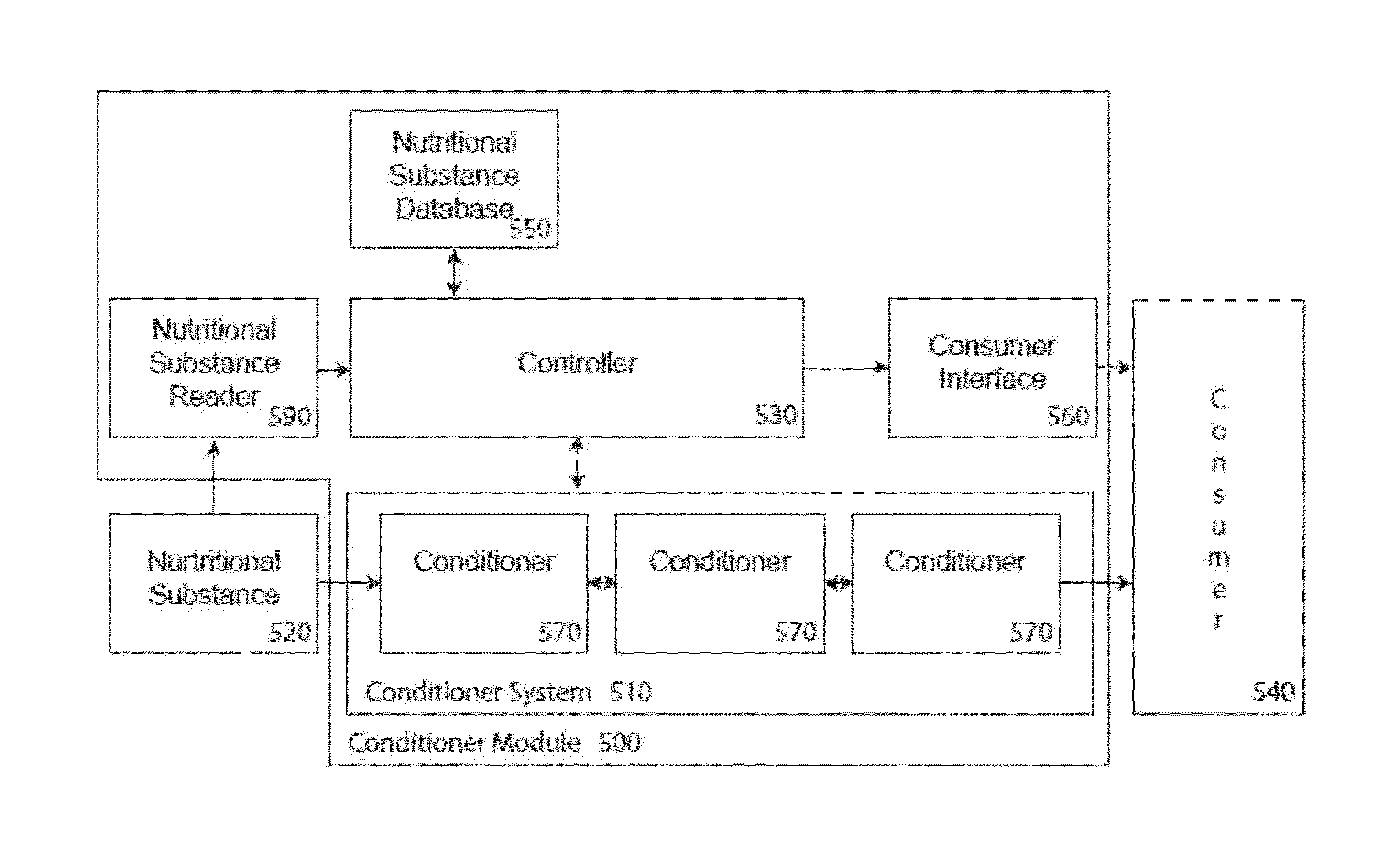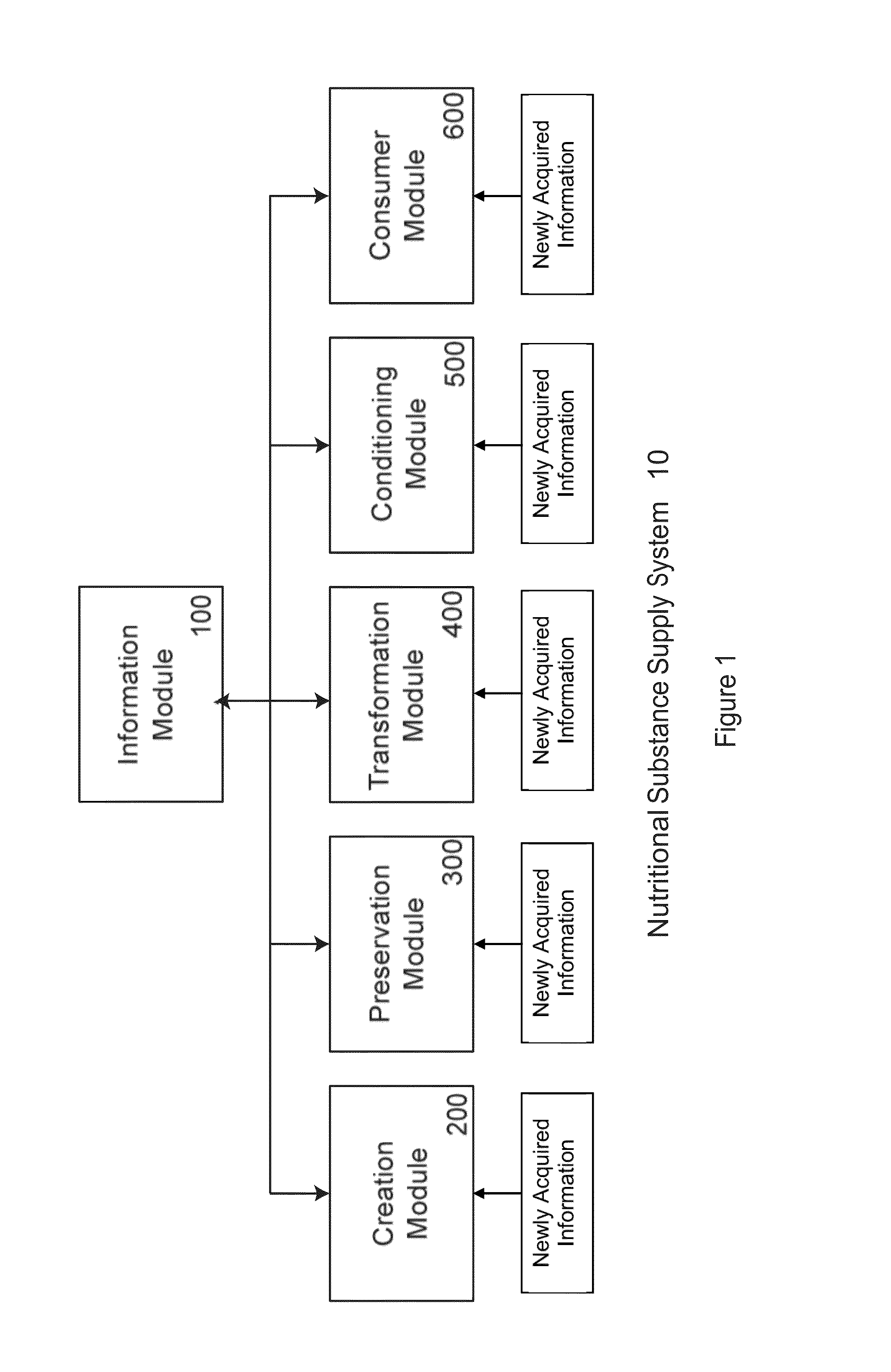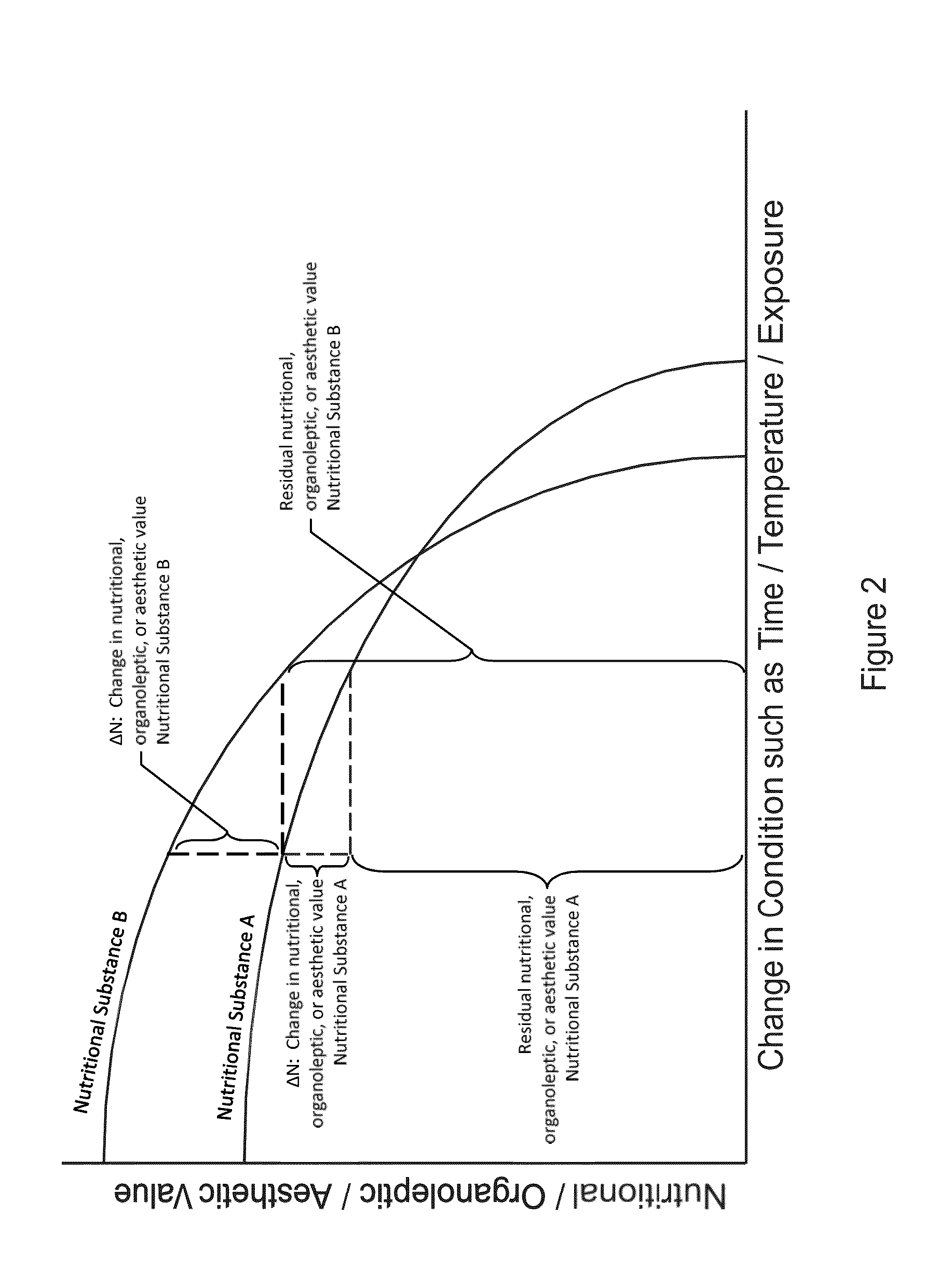While the collectors and creators of nutritional substances generally obtain and / or generate information about the source, history, caloric content and / or
nutritional content of their products, they generally do not pass such information along to the users of their products.
There is generally no
consumer access to, and little
traceability of, information regarding the creation and / or origin, preservation,
processing, preparation, or consumption of nutritional substances.
While there has recently been greater attention by
consumer organizations, health organizations and the public to the
nutritional content of foods and beverages, the food and
beverage industry has been slow in responding to this attention.
One reason for this may be that since the food and
beverage industry operates as silos of those who create nutritional substances, those who preserve and transport nutritional substances, those who transform nutritional substances, and those who finally prepare the nutritional substances for consumption by the
consumer, there has been no
system wide coordination or management of
nutritional content, and no practical way for creators, preservers, transformers, and conditioners to update labeling content for nutritional substances.
While each of these
silo industries may be able to maintain or increase the nutritional content of the foods and beverages they
handle, each
silo industry has only limited information and control of the nutritional substances they receive, and the nutritional substances they pass along, and the limited information in their control provides little utility beyond tracking product inventory and predetermined expiration dates.
Further, if communicated, such changes to labeling content could affect the health, safety, and wellbeing of the consumer.
However, the producer of the ready-to-eat dinner, in the prior example, has very little information to share other than possibly the source of the elements of the ready-to-eat dinner and its
processing steps in preparing the dinner.
Generally, the producer of the ready-to-eat dinner does not know the nutritional content and
organoleptic state and aesthetic condition of the product after it has been reheated or cooked by the consumer, cannot predict changes to these properties, and cannot inform a consumer of this information to enable the consumer to better meet their needs.
The preparation of the nutritional substance for consumption can also degrade the nutritional content of nutritional substances.
For example, in the
milk supply chain, at least 10% of the milk produced is wasted due to safety margins included in product expiration dates.
While grocery stores, restaurants, and all those who process and sell food and beverages may obtain some information from current nutritional substance tracking systems, such as labels, these current systems can provide only limited information.
While they have some knowledge of the nutritional substances they purchase, and make such selections to meet the needs of the consumers, they generally do not transmit that information along to consumers, nor change the way they transform the nutritional substances based on the history or current condition of the nutritional substances they receive for transformation.
Further, the consumer has no way of knowing the history or current condition of the nutritional substances they obtain for preparing a desired
recipe.
Still further, the consumer has no way of knowing how to change or modify the conditioning process to achieve desired nutritional,
organoleptic, and aesthetic properties after preparation.
Consumers locally store, condition, and consume nutritional substances they acquire, but have no way to change the way they locally store, condition, and consume the nutritional substances based on the history or current condition of the nutritional substances.
An important issue in the creation, preservation, transformation, conditioning, and consumption of nutritional substances are the changes that occur in nutritional substances due to a variety of internal and external factors.
Because nutritional substances are composed of biological, organic, and / or chemical compounds, they are generally subject to degradation.
This degradation generally reduces the nutritional, organoleptic, and / or aesthetic values of nutritional substances.
However, being able to consume nutritional substances at the farm, at the slaughterhouse, at the
fishery, or at the
food processing plant is at least inconvenient, if not impossible.
 Login to View More
Login to View More  Login to View More
Login to View More 


